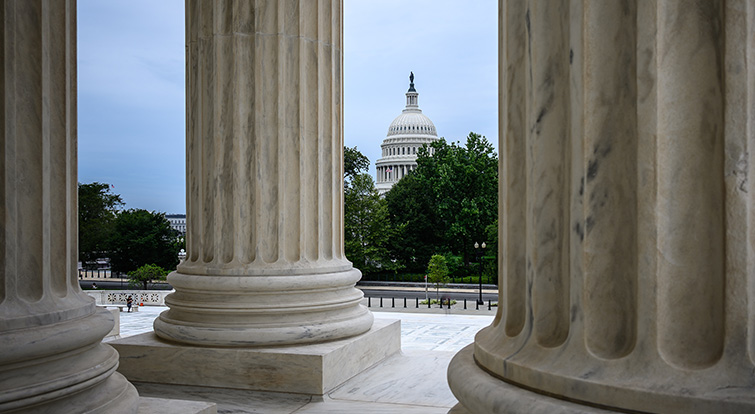Understanding the broadest trade changes in modern history

U.S. tariffs announced on April 2, 2025
A series of U.S. tariff announcements this year culminated on April 2, 2025, with the release of the broadest tariff increase in modern U.S history, imposing a minimum 10% tariff on all imported goods and higher rates on goods from specific countries.
The newly announced reciprocal tariffs follow separate tariffs on goods from Canada, Mexico, and China and on product categories including steel and aluminum and automobiles. The U.S. government is also investigating the potential for tariffs on products such as lumber and copper, while a new U.S. tariff on goods from any country importing oil from Venezuela has yet to be implemented.
Retaliatory tariffs announced against the United States
In the meantime, China and Canada put retaliatory tariffs in place on certain products and announced new ones in the wake of the April 2, 2025, news. China announced tariffs of 34% on U.S. imports, and Canada announced its intent to match the United States’ automotive tariff of 25%. Other nations have signaled they’re considering their options for retaliation.
Strategies for international trade and the latest tariffs
In this environment, supply chain professionals should be:
- Calculating the impact of the new tariffs, including the impact on cash flow
- Gathering documentation on their products’ country of origin, the origin of steel or aluminum content in their products, and other newly required details
- Assessing the adequacy of their company’s customs bond, which guarantees to U.S. Customs and Border Protection that you’re able to pay the duties you owe
- Seeking to qualify their products under the U.S-Mexico-Canada Free Trade Agreement in order to avoid the 25% U.S. tariff on goods from Canada and Mexico
Beyond immediate assessments, mitigating the impact of higher tariffs will require flexible strategies, including:
- Modeling different sourcing and inventory approaches
- Accelerating shifts in production to locations with lower tariffs
- Adjusting safety stock levels if you’re able to do short-term ordering pauses
- Utilizing foreign trade zones to manage the timing of duty payments
- Looking for efficiencies and cost savings in your purchase order management and freight transportation to help offset duty payments
Anticipate trade policy to remain fluid and be ready to adapt over the coming months. Visit the C.H. Robinson client advisories page and subscribe for timely, accurate information from our customs and trade compliance experts. As each supply chain is unique, your response to these significant trade policy changes should also be unique. Work closely with your C.H. Robinson account manager and customs broker to tailor a strategy that’s right for your company.